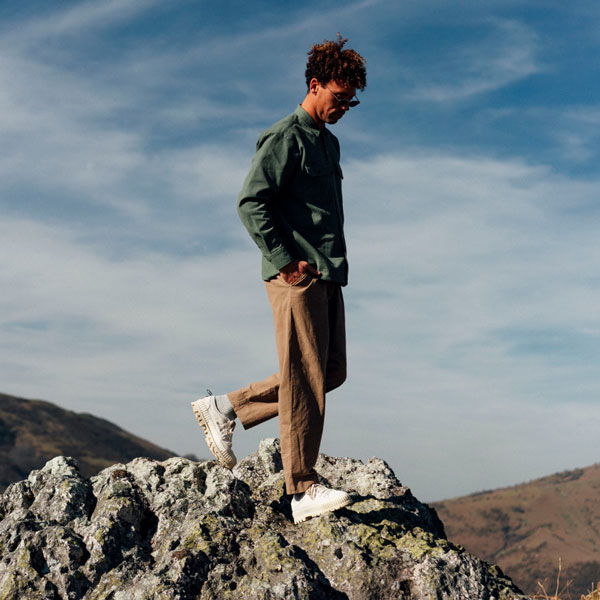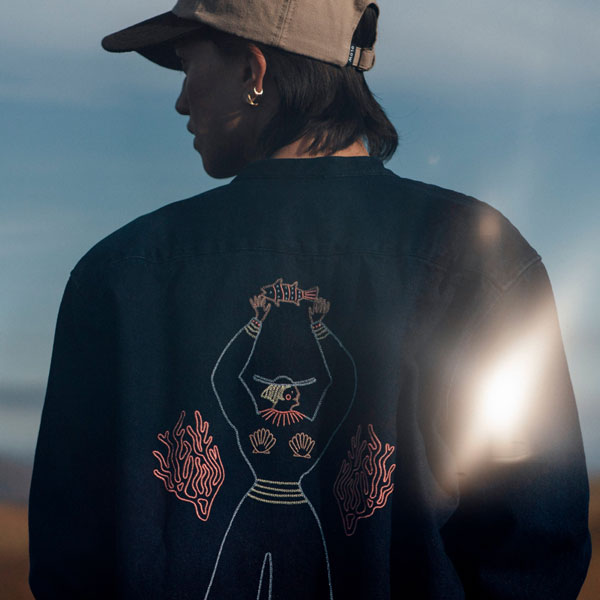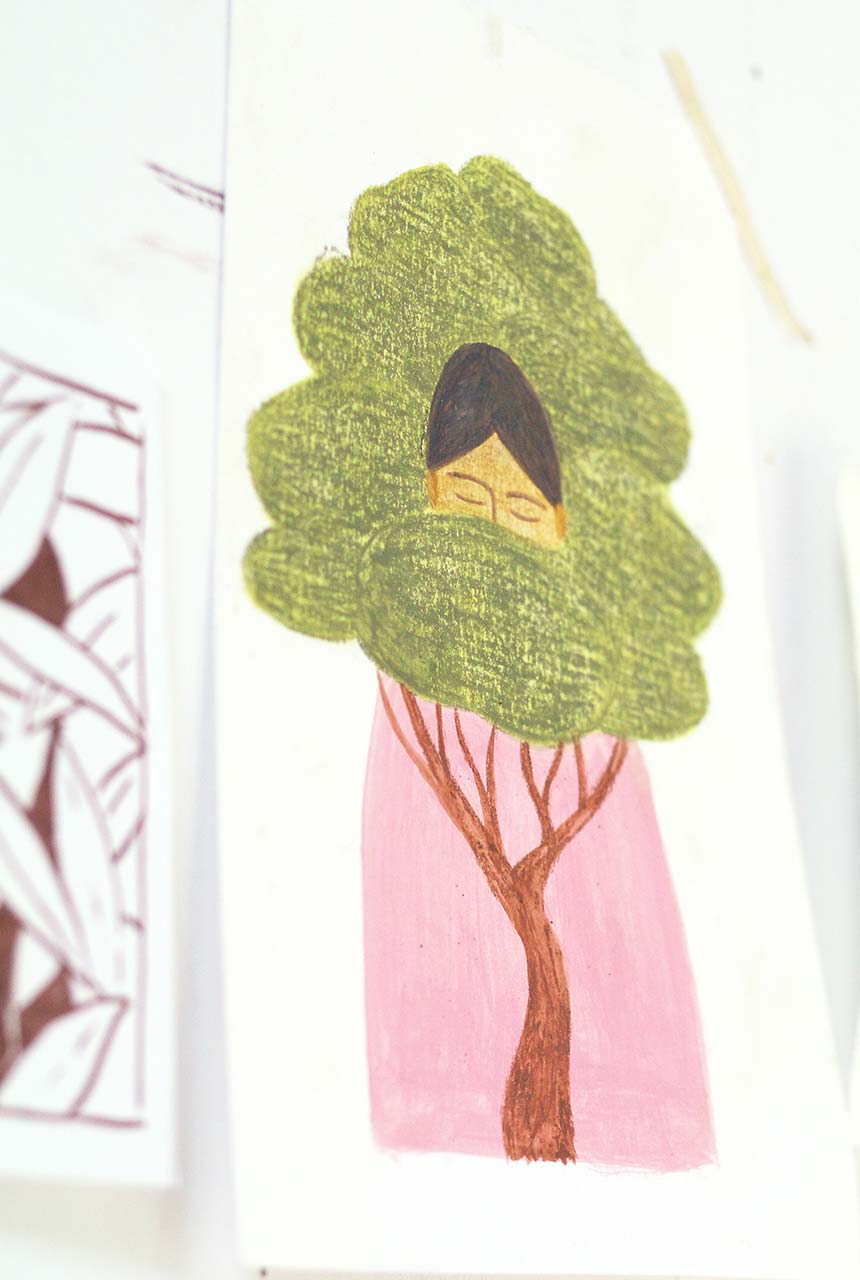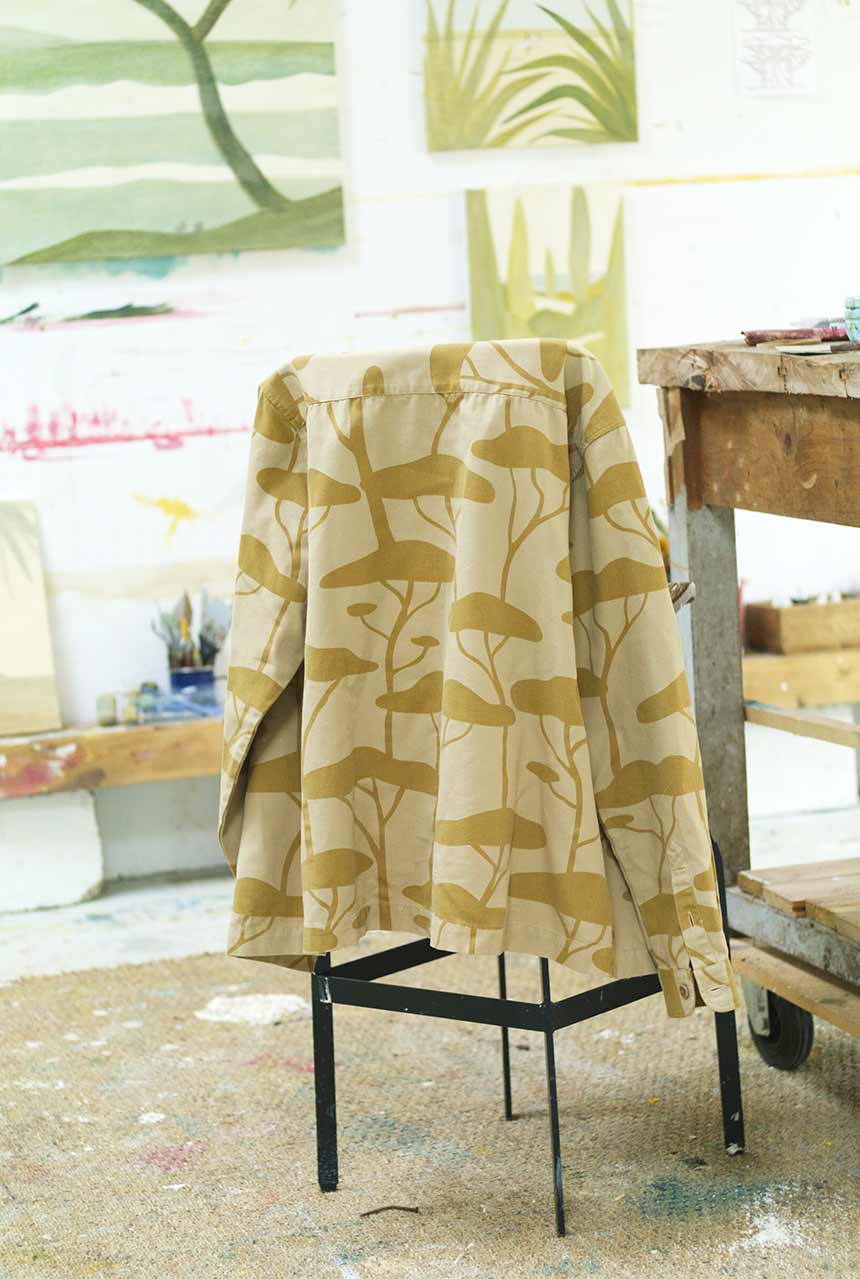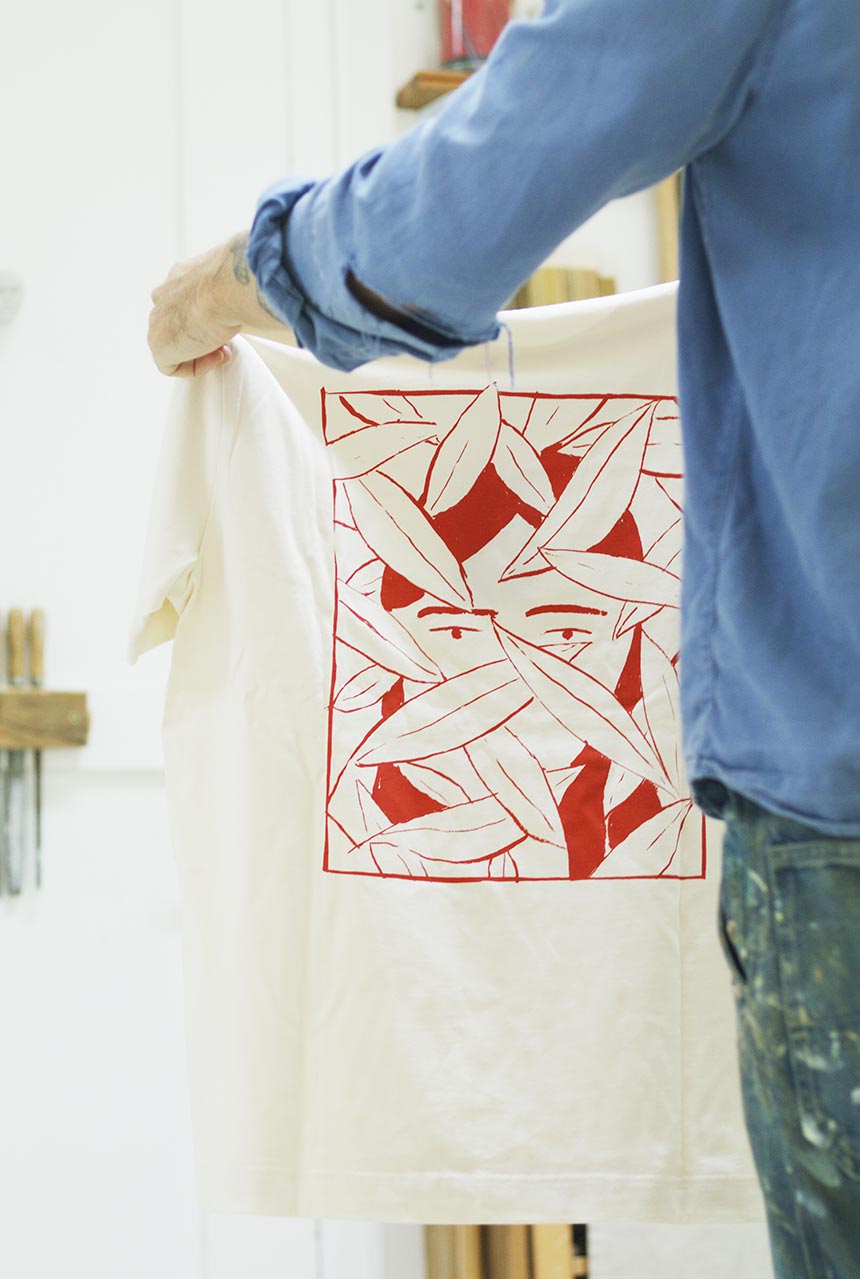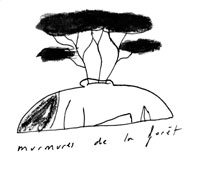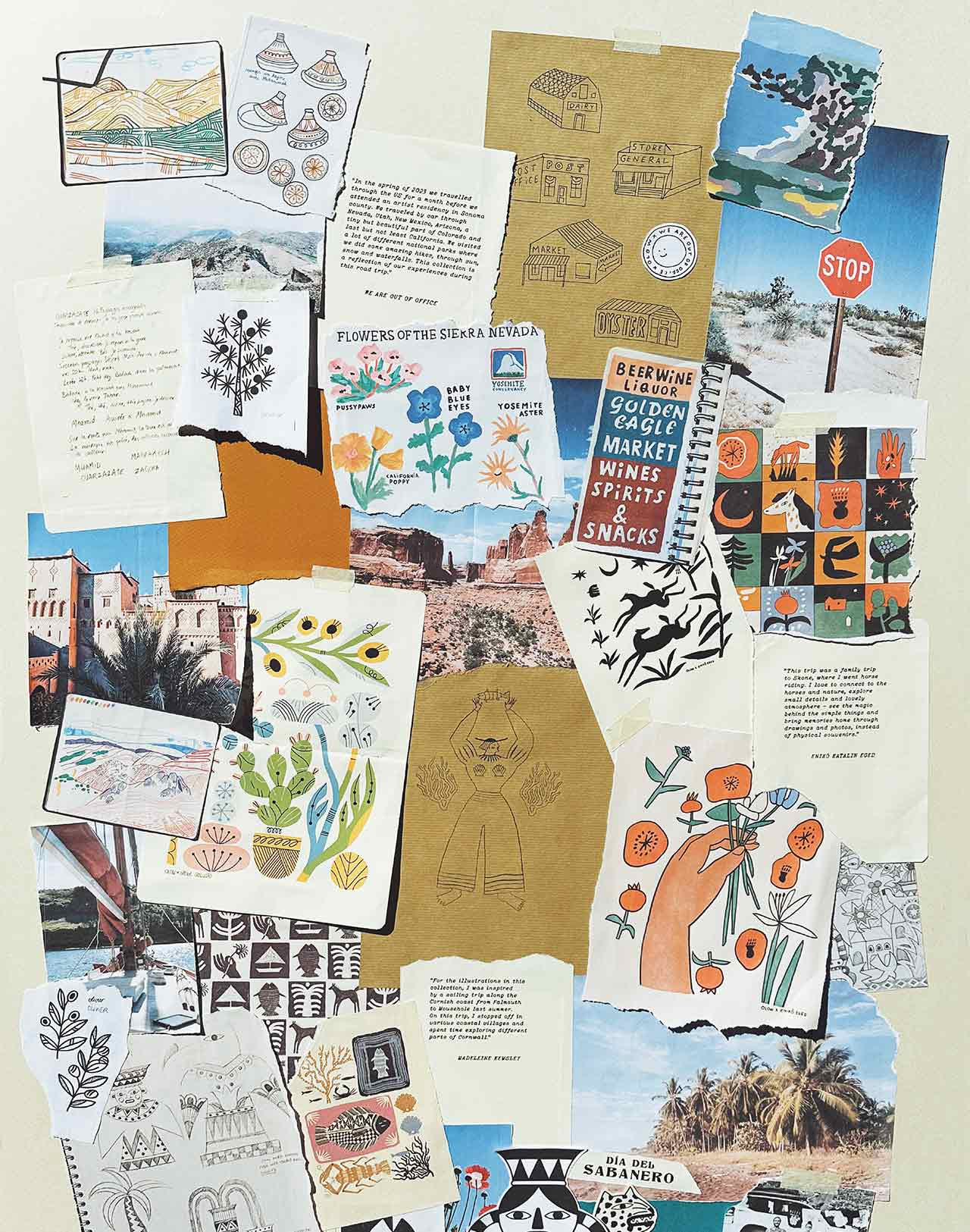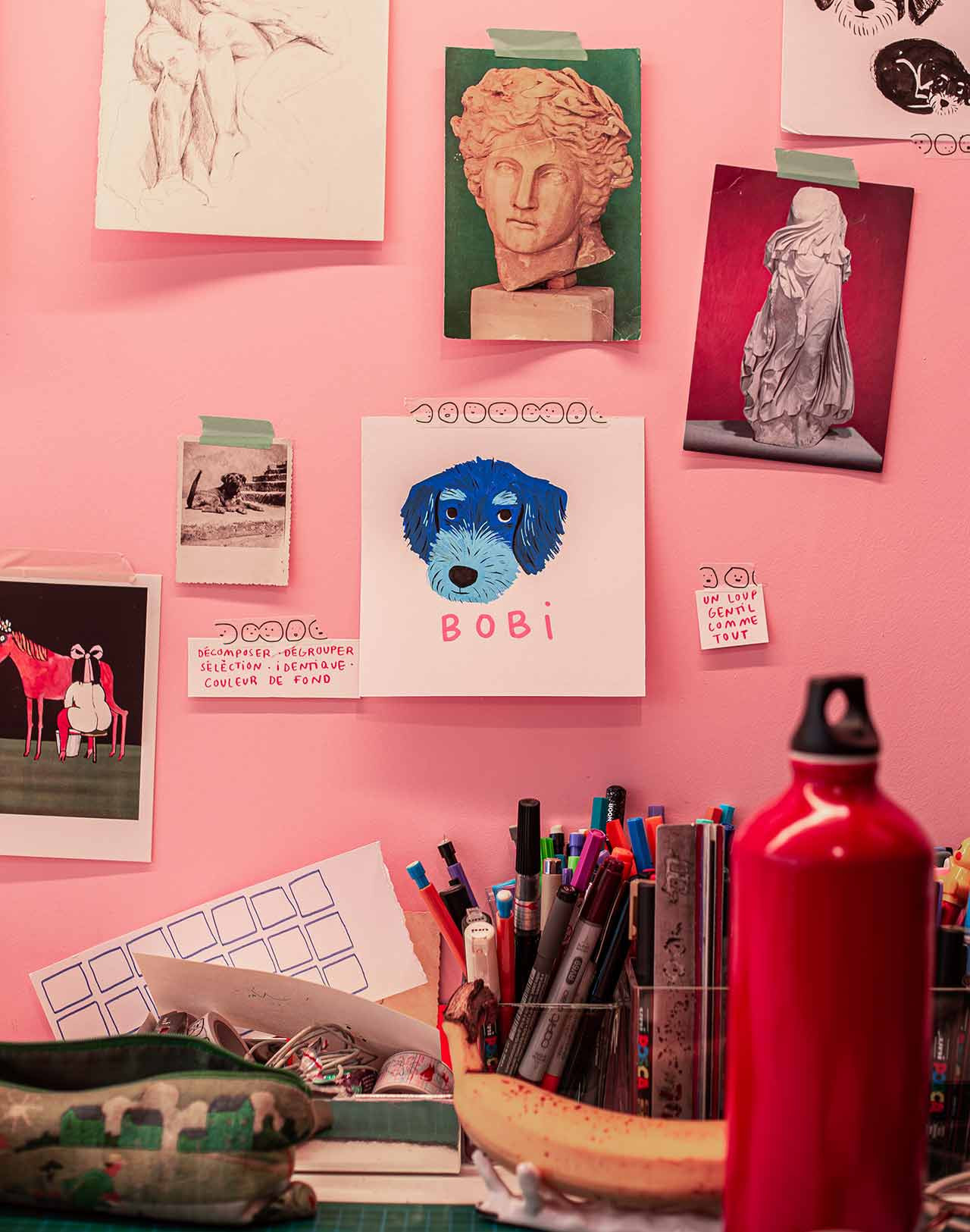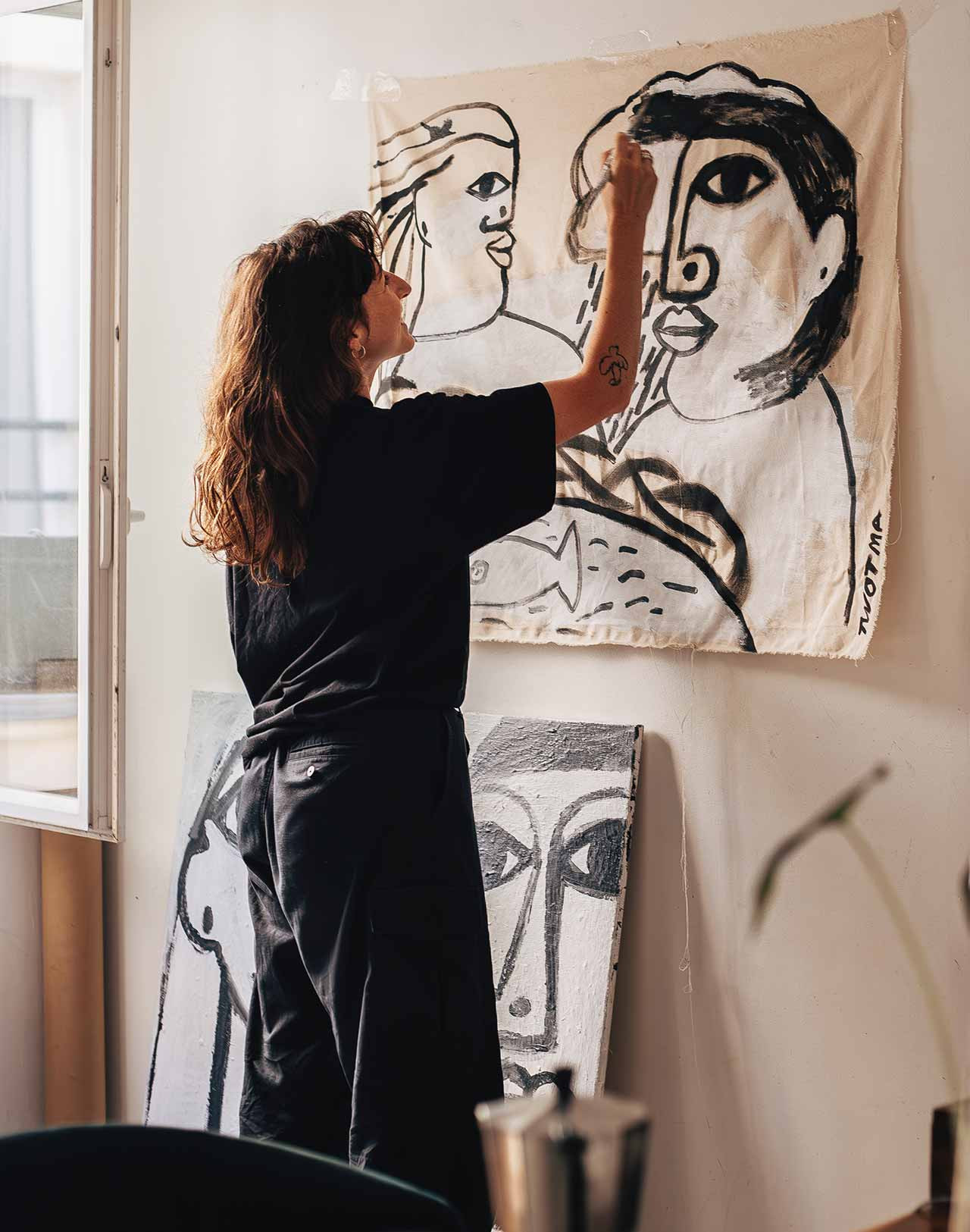In the heart of the forest with Quentin Monge
Discussion with the artist Quentin monge
Photos by Yuuki Shimizu
The idea of going from twenty or so artistic collaborations per collection to 4 didn't just happen. We had to think things through beforehand, and sweep away some of the unknowns by making choices that seemed obvious to us for a first: French-speaking artists to facilitate exchanges, and friends for proximity.
One of the first people we thought of was Quentin. We'd already worked on a capsule with him a few years ago, and he'd even redesigned the walls of our old boutique on rue de Marseille in Paris. But that was 6 years ago, when he was still living in Paris. Since then, as unconditional fans of his work, we've never stopped following his development, and his presence on this collection was an obvious choice.
After several years spent between Paris and London, the artist returned to his native south-east to open the doors of his forest-floor studio to us.
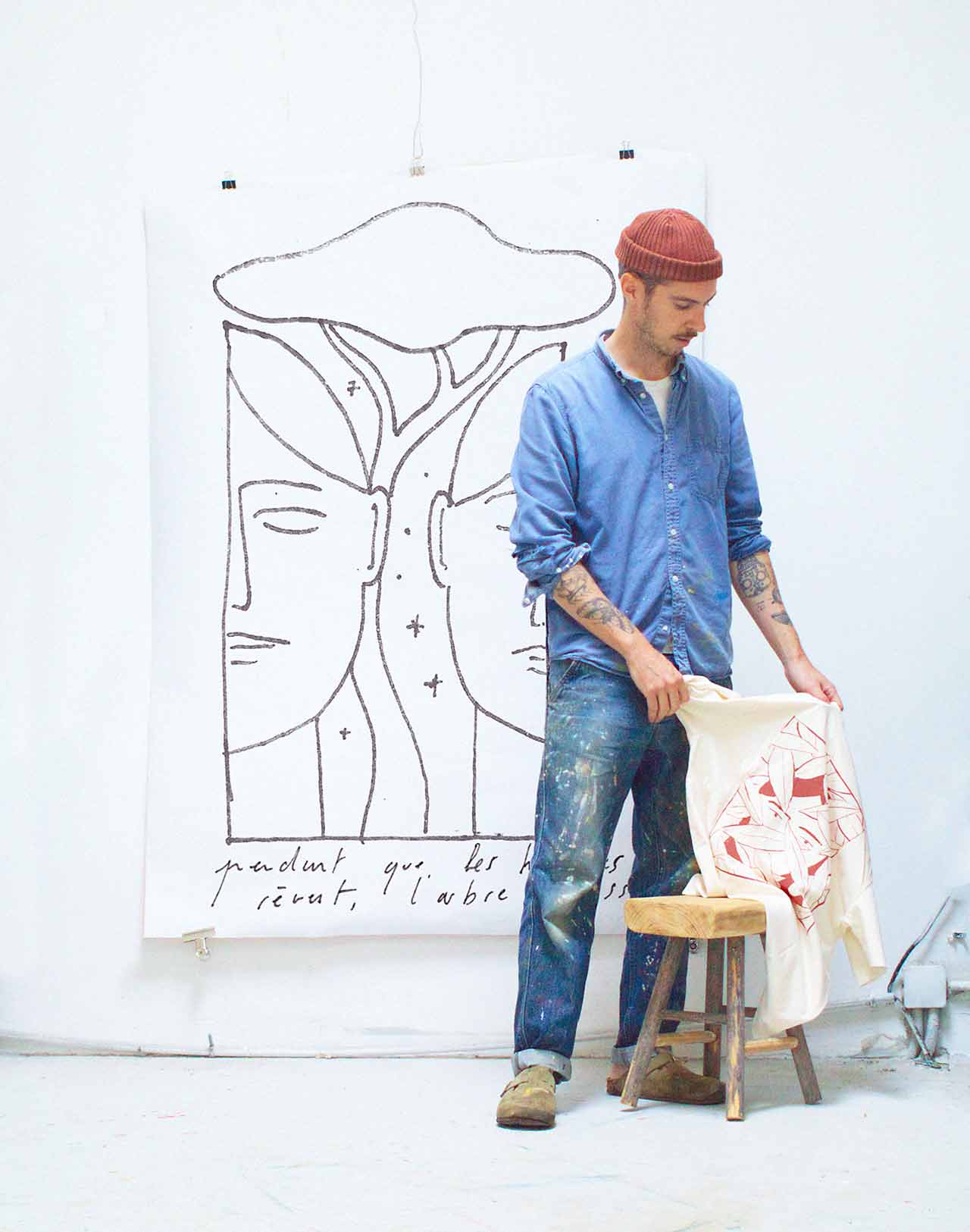
Can you tell us a little about your artistic career?
I started out at a school of visual communications and then entered a fairly traditional circuit of agency graphic design. After a few frustrating years I took the plunge and became an illustrator. Very quickly the call of painting was felt, along with a constant exploration of new techniques. All the while continuing to develop commissioned work.
You grew up in the south-east of France. After spending a few years between Paris and London, you returned there. What prompted you to do so?
I think it took me a while to realise that I didn't really belong in the cities and that the need for nature on a daily basis was stronger than the desire to be where I was. In the end, I made sure that work followed so that I could return to my roots in the south-east of France. It was natural for me to want to put down roots here by the sea and have children here.
What role does nature play in your creative process?
Nature is part of my everyday life. I walk out of my studio and I see trees, I walk out of my house and I'm in a forest and I know that if I push the walk a bit I'll soon find myself on a hill overlooking the sea. These are views that inspire a lot of my work. Even if sometimes they don't inspire me directly, they simply allow me to walk and be present to what I'm doing.
the daily need for nature was stronger than the desire to be where I was.
When we approached you about the Canopée collection, what did it mean to you?
For me, the Canopy evoked a mysterious life in the treetops and, at the same time, the relationship I have with nature in general.
At one point in our discussions, you talked about exploring the world of the tiny, can you tell us more about that?
When I talk about the tiny, I'm talking about the scale of size and time that the tree gives us. The mere presence of an 800-year-old tree can take us on a journey into the past and back to our own short existence. I often like to imagine the memory of a tree. If you look at it long enough, you can see real little miracles taking place from the top to the trunk, not to mention the roots, and this silent spectacle fascinates me.

